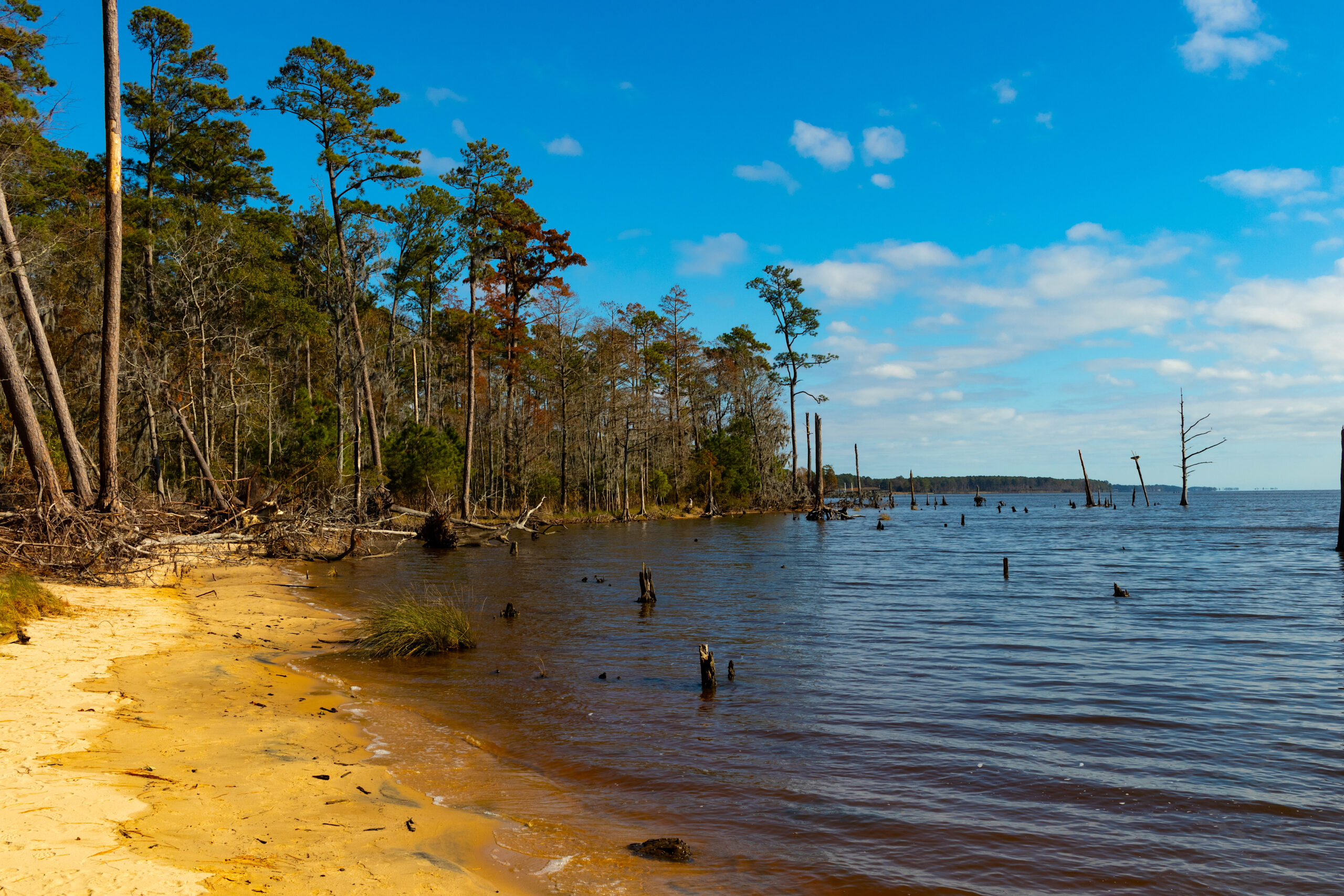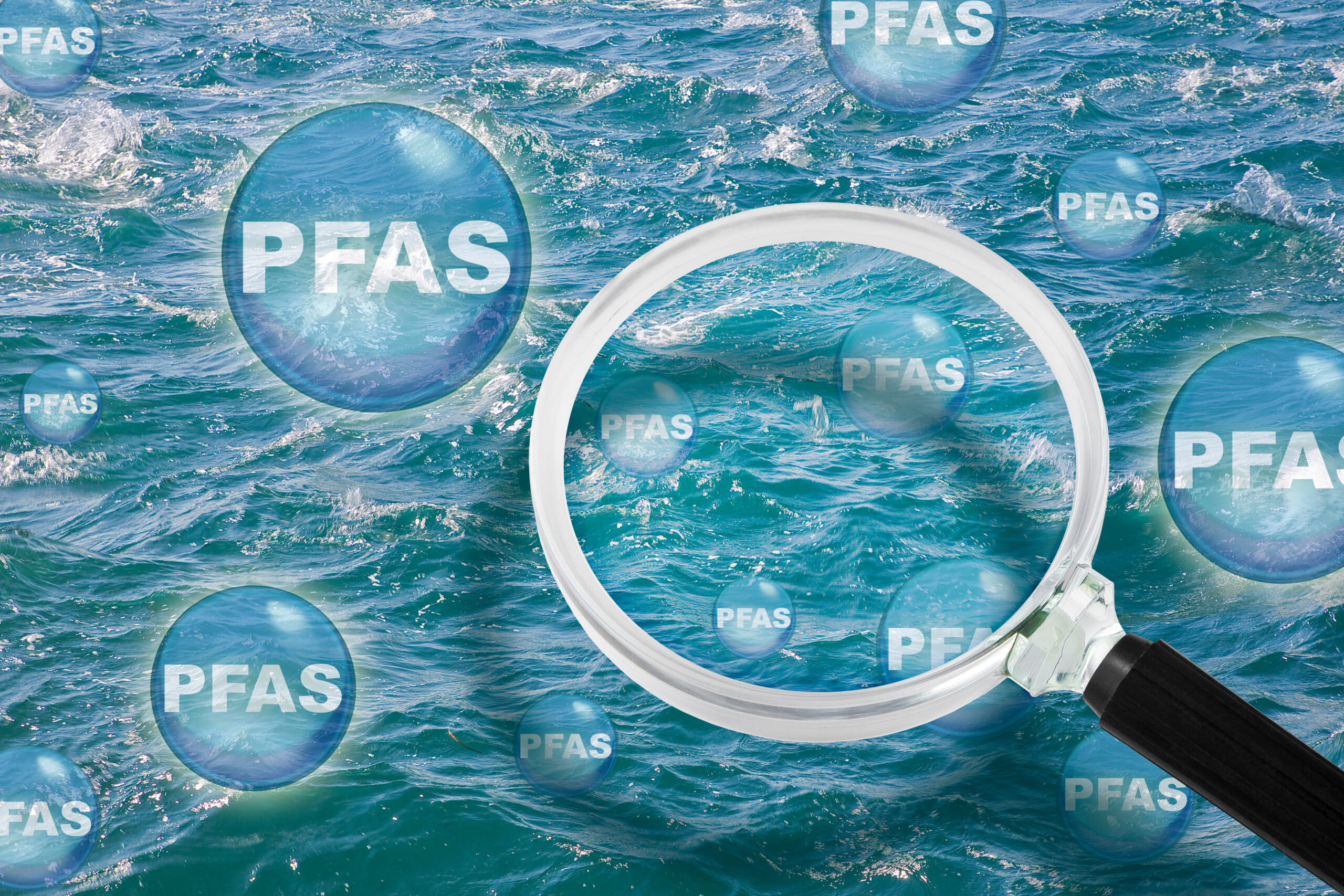New Tool Helps Wastewater Treatment Plants Across North Carolina
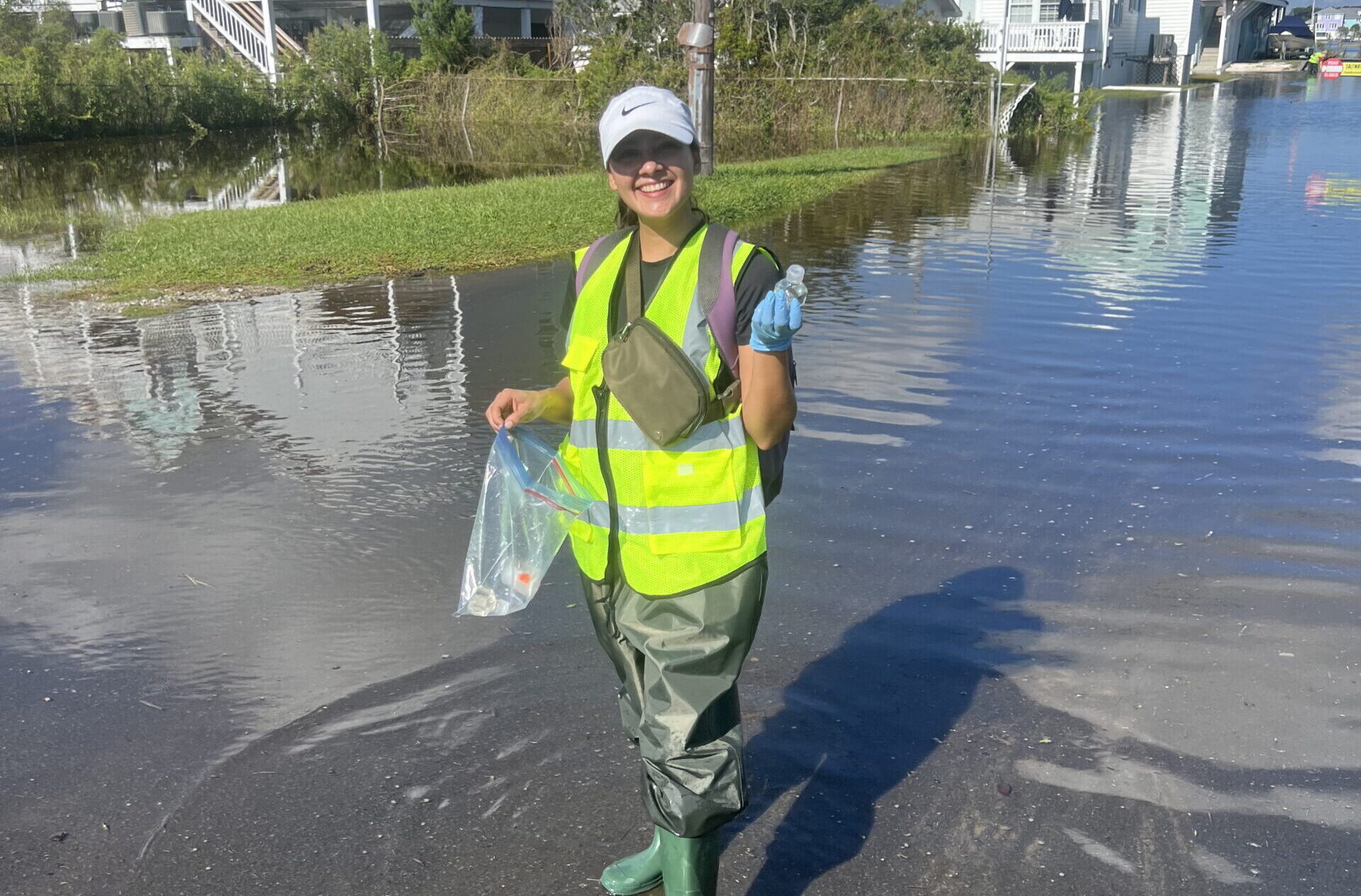
When is the last time you thought about your sewer system? While often overlooked, sewer systems play a crucial role in transporting and treating wastewater and are an integral part of our infrastructure when it comes to public health.
A recent project, led by professor Chris Osburn of NC State’s Marine, Earth, and Atmospheric Sciences Department (MEAS) and funded by WRRI, aims to improve the efficacy of wastewater treatment plants by monitoring stormwater dilution. Sara Cornejo-Zepeda, a masters student in MEAS, works with Osburn on this project.
Sewer systems, which serve to transport wastewater to a centralized treatment plant, have a maximum capacity of wastewater that can be handled. After heavy precipitation, excess water from inflow (rain runoff from surrounding surfaces) and infiltration (groundwater that seeps in through cracks and ruptures in pipes) can enter these systems and exceed their capacity. This, in turn, can cause sewer backups in homes and sanitary sewer overflows into streets and waterways.
The goal of this project is to develop and provide a web-based tool for wastewater treatment plant operators and storm- and wastewater managers that will determine how much stormwater is entering their systems to assist in risk analysis and planning.
“There’s a problem with the sewage infrastructure,” says Cornejo-Zepeda. “Sometimes, due to materials or age, the infrastructure can have a lot of damage, so a lot of inflow and infiltration comes into those systems. Wastewater treatment plants are designed for a specific volume of wastewater, so when we increase that inflow and infiltration, we increase the volume of water. And sometimes sewage overflows, so wastewater is getting into the environment without any treatment.”
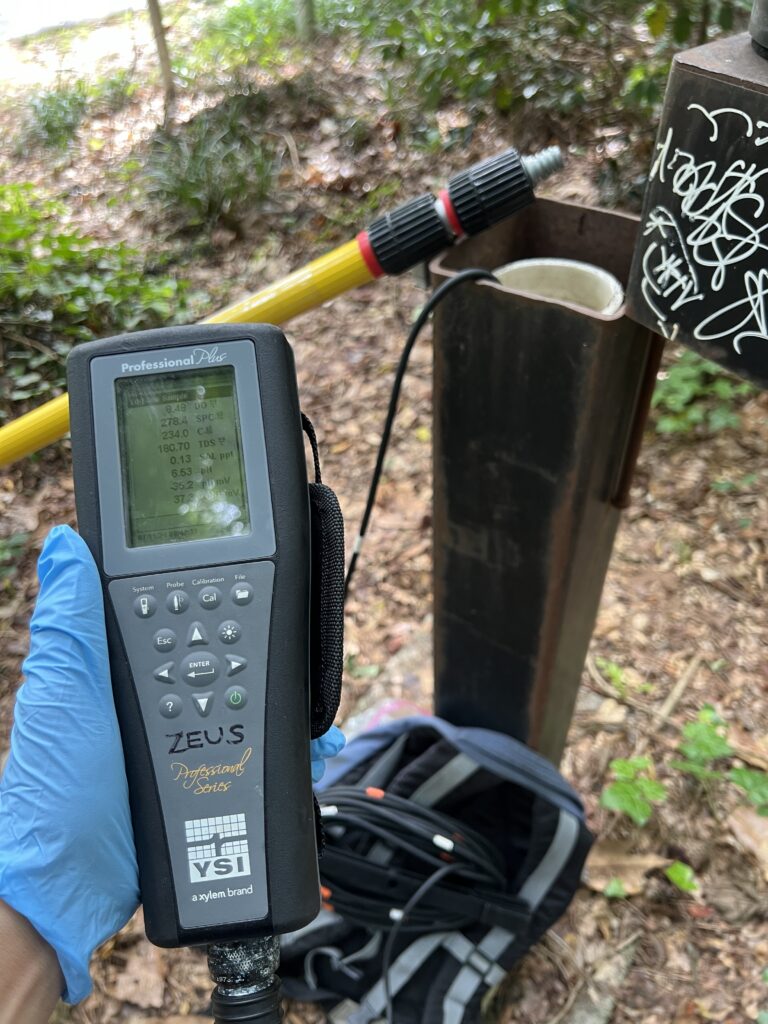
As extreme precipitation events increase in frequency, the likelihood that sewer systems will be overwhelmed only grows higher, which means that measuring inflow and infiltration is a pressing concern.
Osburn’s tool seeks to identify and quantify different sources of inflow and infiltration by measuring the fluorescence, amount of light an object absorbs, of organic matter found in natural waters. Because rainwater, stormwater, and groundwater all have distinctive fluorescence patterns, the tool can estimate the percentage of stormwater dilution of influent into treatment plants within minutes. These measurements allow wastewater treatment plants to more accurately model the effect of stormwater on systems and make informed management decisions.
Osburn and Cornejo-Zepeda are working with 10 wastewater treatment plants across North Carolina to develop and test this tool. Between February 2024 and October 2024, they collected and analyzed samples from these plants. Now, they are working on result reports for each of the wastewater treatment plants, so that they have data about how stormwater is impacting their infrastructure.
“Sara has done an enormous amount of experimental work to help us prove that the model is valid, and that it can detect very small levels of fluorescence,” shares Osburn.
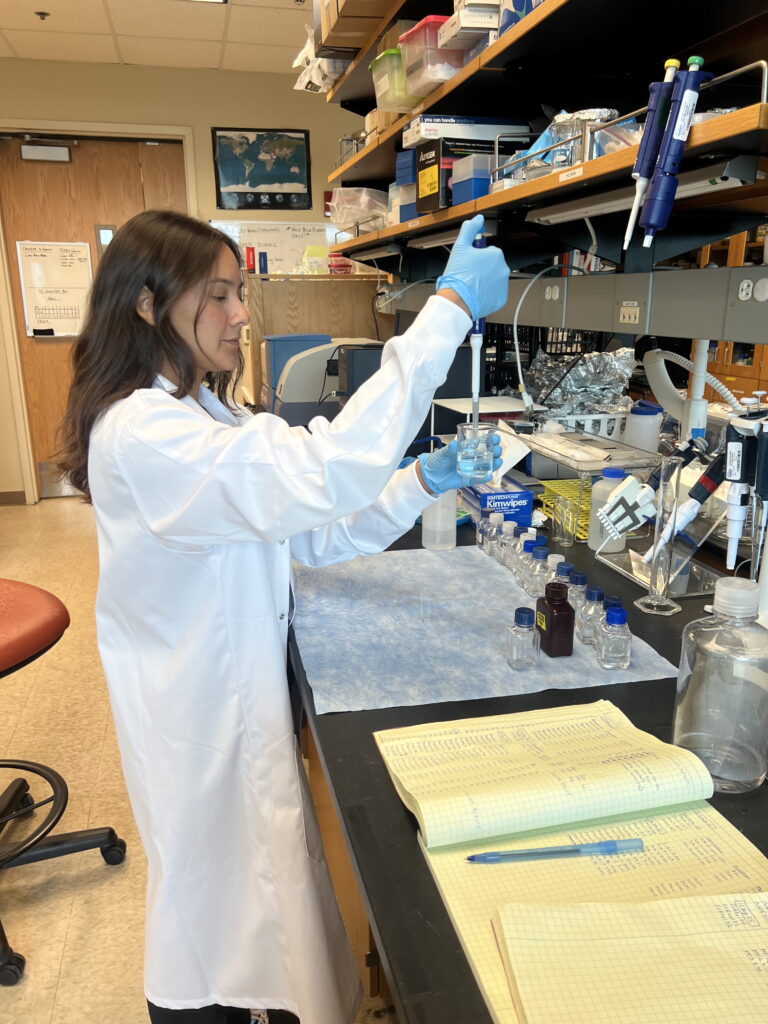
Issues with inflow and infiltration aren’t evenly distributed; they often have a disproportionate effect on rural areas, low-lying areas, and areas with aging infrastructure. Osburn and Cornejo-Zepeda hope that the model will be especially useful for utilities and wastewater treatment plants in these places. This freely-available platform only requires internet access and a fluorometer, equipment that wastewater treatment plants and water quality labs likely already have on hand.
“It’s cost effective,” shares Cornejo-Zepeda. “You can do monitoring over time, and you don’t need very expensive equipment.”
The tool can also help pinpoint problem areas in order to identify where repairs are needed.
To understand the ecosystem around wastewater treatment plants required sampling water in many different places.
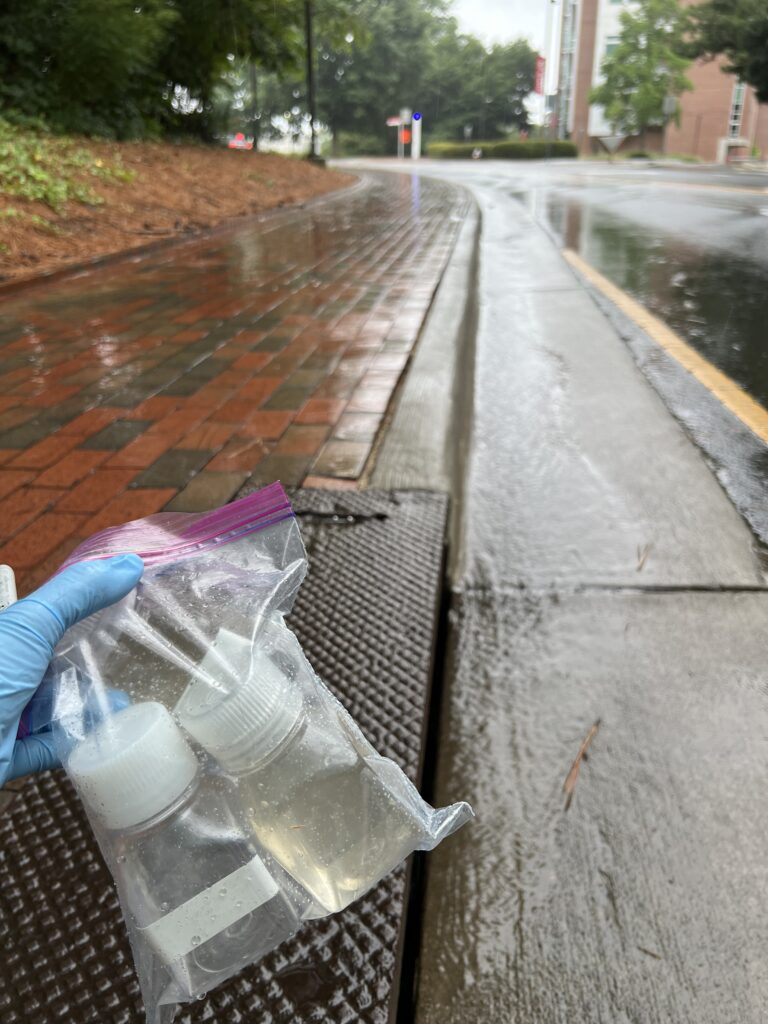
“One of the other valuable uses of this tool is to do forensic analysis,” says Osburn. “We might start at the exit point of a watershed and work our way back to find out where sources are. This adds a complimentary way of trying to track where the problem is coming from. We’re hoping that in the future, this could be used as a way to improve management and cost effectiveness of finding repairs.”
For both Osburn and Cornejo-Zepeda, the fieldwork has been a highlight of the project. “We were collecting samples on a weekly basis from wells, and from a stream that we have here near campus. So that was exciting to go every single day,” shares Cornejo-Zepeda.
“I don’t often these days get to do sampling, and so when I could help with collecting rainwater or even street runoff, that was a lot of fun,” adds Osburn.
In terms of next steps, the team is working on making the tool more accessible for users. “We’re trying to think about what end users might need and how we can make it a little bit more user friendly,” says Osburn.
The tool is already helping wastewater treatment plants and utilities across North Carolina. But, Cornejo-Zepeda adds, the potential applications of the model are much wider. “You can use the same approach in other types of research or objectives,” she says.
For example, the team is already working with Wake County to use the tool to monitor and analyze water from wells. “There’s a broad approach that you can use with this type of tool,” says Cornejo-Zepeda.
The project is an example of research that is use-inspired: tackling a pressing community issue by combining academic and applied perspectives. “We have the science collaboration, the end user collaboration, and then the collaboration with the folks at WRRI, which makes a nice end product,” shares Osburn. “End user reports, how-to guides, and protocols come out of this, while also advancing what we understand about organic matter, cycling, wastewater sources and even long-term environmental effects within these different watersheds.
See Peter Hoff’s and Chris Osburn’s article in Next Research, Evaluation of linear mixing model in fluorescence spectroscopy, to learn more about using fluorescence to study water sources.
- Categories:

